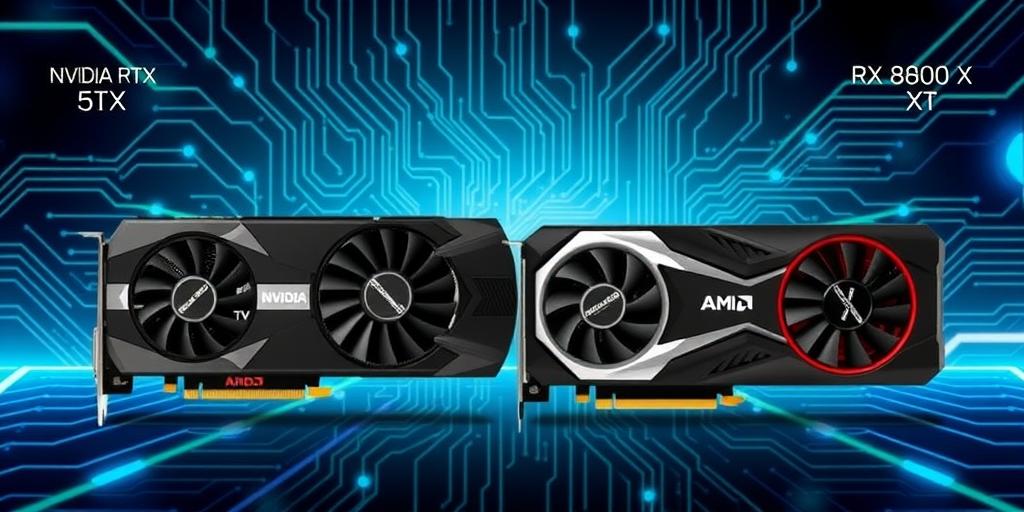The highly anticipated clash between NVIDIA's RTX 5080 and AMD's Radeon RX 8800 XT is on the horizon, promising a new era of graphical power for gamers and content creators alike. This article provides a detailed comparison of these upcoming GPUs, examining their specifications, expected performance, and potential market impact.
Architecture and Specifications
The NVIDIA RTX 5080 is expected to be based on the Blackwell architecture, succeeding the current Ada Lovelace architecture. Key improvements are anticipated in ray tracing capabilities, AI-driven features like DLSS, and overall power efficiency. While exact specifications remain unconfirmed, industry rumors suggest a significant increase in CUDA cores, memory bandwidth, and clock speeds compared to its predecessor.
AMD's Radeon RX 8800 XT, based on the RDNA 4 architecture, aims to deliver a competitive alternative. RDNA 4 is expected to bring enhancements to compute units, ray accelerators, and memory controllers. AMD has historically focused on providing strong performance per dollar, and the RX 8800 XT will likely continue this trend. Leaks point to a redesigned architecture focused on efficiency and rasterization performance.
Performance Expectations
Based on available information, the RTX 5080 is projected to offer substantial performance gains over the RTX 4080, particularly in ray-traced games and AI-accelerated workloads. Gamers can expect higher frame rates at 4K resolution and improved visual fidelity. The RX 8800 XT is expected to compete closely, potentially trading blows with the RTX 5080 in rasterization performance while offering a more budget-friendly option.
Key Features and Technologies
- NVIDIA RTX 5080:
- Next-generation Ray Tracing Cores
- DLSS 4.0 (Deep Learning Super Sampling)
- Increased CUDA Core Count
- Enhanced Memory Bandwidth
- AMD Radeon RX 8800 XT:
- RDNA 4 Architecture
- Improved Ray Accelerators
- FidelityFX Super Resolution (FSR) Technology
- Competitive Price Point
Market Impact and Availability
The release of these GPUs will significantly impact the high-end graphics card market. NVIDIA's RTX 5080 aims to solidify its position at the top, while AMD's Radeon RX 8800 XT seeks to disrupt the market with a compelling price-to-performance ratio. Availability will depend on production capacity and supply chain factors, which have been volatile in recent years. Consumers should monitor announcements from both companies for release dates and pricing information.
Conclusion
The battle between the NVIDIA RTX 5080 and AMD Radeon RX 8800 XT is poised to deliver exciting advancements in GPU technology. Gamers and content creators stand to benefit from increased performance, improved features, and greater competition in the high-end graphics card market. Staying informed about the latest specifications and performance benchmarks will be crucial for making informed purchasing decisions.









